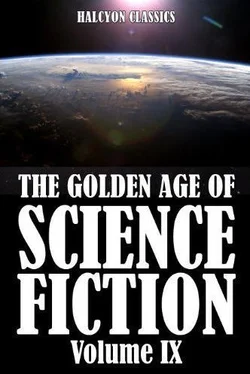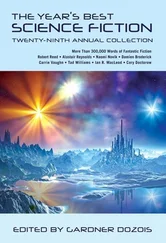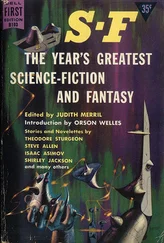During the remainder of our stay upon Mars we visited almost every important place upon the planet, either by means of air-ships, motors, or by travelling along the main canals in splendidly equipped electric boats.
We passed through the whole length of the Eumenides-Orcus, from its starting-point on the Phoeniceus Lacus, in the southern hemisphere, to the Trivium Charontis, in the northern hemisphere—a distance of 3540 miles, this being the longest canal on the planet. We visited the Solis Lacus, or “Lake of the Sun” (an area larger than England), situated in the southern hemisphere, which has usually been seen by our observers as a large dark patch, oval in shape. Indications of changes in this area were, however, noted at the time of the opposition in 1907; and it is not improbable that further alterations will be seen shortly.
Numerous important towns exist upon this area, and several canals connect it with surrounding areas.
We visited the north pole in our air-ship, and saw the snow falling thickly, and rapidly adding to the size and thickness of the snow-cap, it being winter time. We visited the south pole and watched the fast-melting snow (the cap being almost at its minimum size) and the distribution of the resultant water down the various broad channels which conduct it to the canals, from whence it is carried all over the planet.
When it is spring in the northern hemisphere the winter snow-cap at the north pole will begin to melt in like manner, and the water be distributed in a similar way. The melting begins about the 1st April and lasts till July, and sometimes considerably later in the year.
Thus, during the Martian year there are two distributions of water—one from the north pole and one from the south pole; and the growth of vegetation follows the passage of the water as it flows downwards from the poles to the equator.
On our earth vegetation progresses in an exactly opposite direction. Beginning near the tropics, where it is always summer, as the sun passes northward of the equator so vegetation gradually appears and develops onwards towards the north pole. It is exactly the same in the southern hemisphere; after the sun crosses the equator into the south the vegetation grows and spreads towards the south pole.
The reason of this is that on the earth the supply of water by rainfall and snows is abundant, and it only requires the warmth of the sun to cause vegetation to spring up again at the proper season when the winter has passed.
On Mars the sun has the same action, but until the water comes down from the poles and furnishes the necessary moisture, the sun can produce no effect and there can be no fresh vegetation. Thus, on Mars, the flow of water is the determining factor, and vegetation follows its course from the poles towards the equator.
Observation shows that this is the case, and it has formed one of the strongest arguments in support of the idea of water conveyance by means of artificial canals. The opponents of the canal theory seem carefully to avoid any mention of this argument.
While we were watching the melting of the snow at the south pole, I mentioned to Merna and Tellurio, who accompanied me, that one of our scientific men, relying for support on a speculation by a lady writer, had arrived at the conclusion that the snow-caps could not possibly supply anything like the amount of water required. The writer in question had stated that the maximum area of the southern snow-cap was 2,400,000 square miles; and, assuming it was composed of snow of an average depth of twenty feet, this would only give an average depth of about one foot of water over its whole area.
The whole of the dark areas on the planet covered at least 17,000,000 square miles, and as this was seven times the area of the snow-cap, it followed that the dark areas could not be covered with more than two inches of water. From this scanty and inadequate supply of two inches of water allowance must be made for an enormous loss by evaporation; so, as the writer said, “the polar reservoirs are despoiled in the act of being opened.”
Tellurio at once settled the matter by saying, “Mr. Poynders, it is a very pretty theory, but, unfortunately for its supporters, it is entirely wrong, the figures being inaccurate, and the estimate of the extent of the area to be supplied, as well as the amount of water available, is made under a complete misapprehension of the facts.”
[Illustration: From a Globe made by M. Wicks Plate XIV
MARS. MAP VII
The white area at the top of this map is the south polar snow-cap, at about its usual maximum size. In some hard winters it attains a diameter of considerably over 100 degrees.]
“The maximum area of the south polar snow-cap is usually more than 10,000,000 square miles instead of less than 2,500,000 as stated, but it is sometimes still greater during a hard winter. Then, where did the writer acquire the notion that the whole of the dark areas had to be covered with water? Only the canals and trenches have to be filled, and, at the highest computation, these would cover only 2,250,000 square miles! So even accepting her average of twenty feet depth of the snow (which would give about one foot of water over the whole area of the snow-cap), there would still be sufficient water to fill every canal and trench upon our planet to a depth of nearly four feet six inches.
“Let us suppose we have 700 series of canals, each averaging 1400 miles in length, and each series having an aggregate width (including the area of the irrigation trenches) of 2-1/4 miles. You will see that gives about 2,250,000 square miles to be covered with water. My estimate of the area to be covered is, however, much in excess of the real amount, as the average aggregate width of the series of canals would be less than I have assumed, and the trenches are shallow.
“I must also point out that only a small proportion of the whole number of canals would be in use at any given time, and the depth of the polar snows averages considerably more than twenty feet; so a very much greater depth of water can be secured in those canals which are in use. The main canals which are used for navigation purposes are, of course, much wider and deeper than the irrigation canals. In the hotter regions many covered compensation reservoirs are provided, and these make good the wastage caused by excessive evaporation where pipes cannot be used.”
“Thank you, sir,” I said; “the information you have now given me entirely confirms the figures as to the area of the snow-cap, &c., mentioned by Professor Lowell, but as regards the depth of the snow and the size of the area to be covered, he has with scientific caution refrained from estimating to the full extent which the facts you mention seem to warrant. In addition to this, no allowance has been made for the water derived from the northern snow-cap.”
Thus vanished the theory which was supposed to support the view that the canals must be hopelessly unworkable, and could never be of any use for irrigation purposes.
It had also been argued that no intelligent beings would construct canals if the planet were generally flat, as it would only be necessary to let the water flow over the surface as far as it would go, and thus irrigate the parts reached by the water; whilst if it were not flat, the canals could not be constructed at all.
I asked Tellurio “What he thought of this suggestion?”
He replied, “Well, sir—here we have a planet believed to possess only a very scanty supply of water, which must require the most careful husbanding and economy in distribution; yet it seems to have been calmly suggested that we would deliberately waste the precious fluid by allowing it to flow at random over the small portion of our land which it would reach, where it might or might not be required! Our engineers, I may say, are quite capable of overcoming any difficulties arising from inequalities of the ground.
Читать дальше












